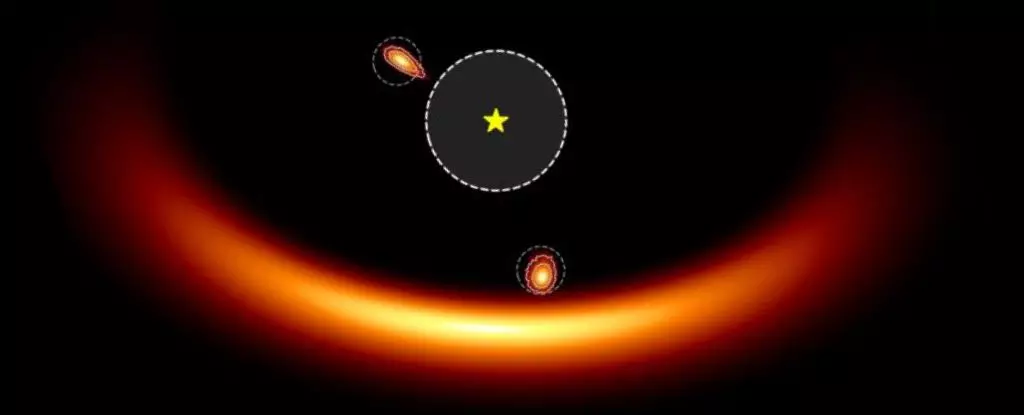The search for exoplanets—worlds beyond our solar system—has unveiled profound insights into how planetary systems evolve. At the forefront of this exploration is PDS 70, a young star system that’s captured the attention of astronomers due to its unique characteristics and the intriguing formation of its planets. Recent observations utilizing the James Webb Space Telescope (JWST) have propelled our understanding of this system to new heights, offering a glimpse into the complex processes that govern planet formation.
Discovering PDS 70: A Window into Planet Formation
PDS 70 lies approximately 370 light-years away from Earth and belongs to a category known as T-Tauri stars. These stars are relatively young, on the order of 5.4 million years, and they are characterized by their active accretion of material. The surrounding disks of gas and dust are the very cradle from which planets like PDS 70b and PDS 70c are formed. Directly imaging these planets marks a significant milestone in astronomical observation; indeed, PDS 70b holds the distinction of being the first protoplanet ever directly observed. This extraordinary feat was accomplished by the European Southern Observatory’s Very Large Telescope (VLT) in 2018.
The Role of the James Webb Space Telescope
As a cutting-edge observatory, the JWST’s primary mission includes unpacking the mysteries of exoplanets. Its innovative capabilities, particularly the Near Infrared Imager and Slitless Spectrograph (NIRISS), facilitate groundbreaking observations through a technique known as Aperture Masking Interferometry (AMI). This method effectively turns the JWST into an interferometer, significantly enhancing its resolution and making it adept at examining the conditions around newly forming planets. Recent observations have provided striking evidence of the material surrounding both PDS 70b and PDS 70c, reinforcing theories about their ongoing formation processes.
The new research echoes the sentiment that observing PDS 70 is akin to peering into our solar system during its infancy. The data obtained through JWST indicates the presence of warm material surrounding the planets, which is interpreted as evidence of circumplanetary disks—a vital component in the accretion of material that contributes to planetary growth. The research team, led by Dori Blakely, has highlighted how these observations have found greater light emissions at longer wavelengths compared to previous studies. This illuminating discovery suggests the planets are accumulating material, which provides crucial clues to how they might evolve in the future.
Co-author Doug Johnstone emphasized the significance of these findings, stating, “These observations give us an incredible opportunity to witness planet formation as it happens.” The implications are vast, not only enhancing our understanding of how planetary systems can evolve over millions of years but also challenging existing models that apply to low-mass stars and brown dwarfs.
Building on previous research, the latest findings also present tantalizing evidence for a potential third planet, tentatively named PDS 70d. Early hints of this additional celestial body suggested a strong possibility of its existence; however, it could also be due to a transient clump of dust or a spiral of material in motion around the star. The nuances of this finding reflect the complexities inherent in the study of planetary formation, showcasing how multiple interpretations can exist concurrently.
Notably, any candidate for PDS 70d would require careful scrutiny, as its atmospheric properties may be distinctly different from those of PDS 70b and PDS 70c. The prospect of studying a variety of formations further enriches the ongoing dialogue on how different planetary atmospheres influence a system’s evolution and viability for life.
The research stemming from JWST observations of PDS 70 represents a monumental leap in understanding planetary formation. As we look more closely at these early-stage planetary systems, we stand on the brink of answering age-old questions about our own solar system’s origins and those of countless others. The combined efforts of astronomers utilizing state-of-the-art instruments are unveiling the mysteries of the cosmos, and every new discovery adds another layer to our comprehension of where we fit within this grand tapestry of the universe.
With ongoing and future observations, we are poised to deepen our understanding of planetary systems, illuminating the story of our own solar origins and pushing the boundaries of modern astronomy.


Leave a Reply